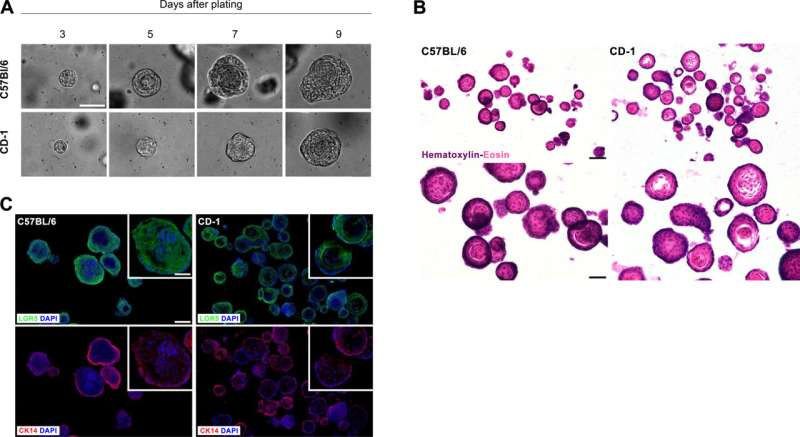Esophagus organoid holds promise for cancer research

Researchers at the University of Szeged in Hungary have demonstrated for the first time that an esophagus organoid successfully duplicates a vital function of that organ. The study is published in the American Journal of Physiology-Cell Physiology. It was chosen as an APSselect article for November.
Organoids are small 3D tissue constructs that self-organize into structures that mimic the functions of a particular organ. They express greater physiological complexity than traditional cell cultures.
According to the American Cancer Society, an estimated 19,260 people in the U.S. will be diagnosed with esophageal cancer in 2021. Though the five-year survival rates have been improving, the rate for even localized esophageal cancer remains below 50%. If the cancer has already spread to other parts of the body by the time of diagnosis, the rate drops to 5%.
The organoid studied by the Szeged team more fully recreates the ion transport systems of the esophagus. Ion transport in the esophagus is important for maintaining the pH and for the precise control of whether and which substances are able to cross the protective cell barrier.
Scientists have already established that ion transport disruption plays a roll in inflammatory and cancerous diseases of the esophagus. By confirming that this organoid models ion transport, the team confirmed it is a new promising "preclinical tool to assess the effectiveness of novel therapeutic compounds."
"We conclude that [esophageal organoids] provide a relevant and suitable model system for studying the ion transport mechanisms of esophageal epithelial cells, and they can be also used as preclinical tools to assess the effectiveness of novel therapeutic compounds," the authors wrote.
More information: Marietta Margaréta Korsós et al, Mouse organoid culture is a suitable model to study esophageal ion transport mechanisms, American Journal of Physiology-Cell Physiology (2021). DOI: 10.1152/ajpcell.00295.2021


















